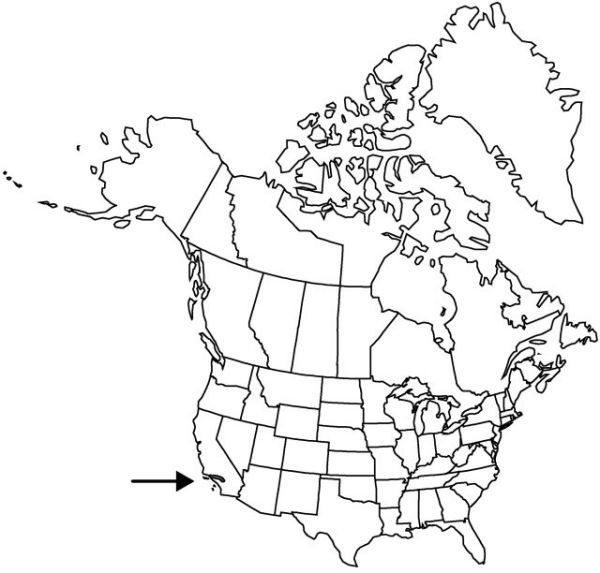Calochortus plummerae
Pittonia 2: 70. 1890.
Plants usually bulbose; bulb coat fibrous-reticulate. Stems slender, usually branching, 3–6 dm. Leaves: basal withering; blade linear to lanceolate, 2–4 dm. Inflorescences 2–6-flowered; bracts resembling distal cauline leaves. Flowers erect; perianth open, broadly campanulate; sepals lanceolate, 3–5 cm, glabrous or with a few hairs at base, apex long-tapering; petals pale pink to rose, drying purplish, broadly cuneate to obovate, 3–4 cm, glabrous distally or nearly so, rarely fringed, with conspicuous, long, yellow hairs in broad median band, margins dentate; glands round, slightly depressed, ± glabrous, bordered by ring of dense, obscuring, orange hairs; filaments 9–11 mm, ± equaling anthers; anthers lanceolate-linear, apex acute to somewhat short-tipped. Capsules erect, linear, angled, 4–8 cm, apex acute. Seeds light beige. 2n = 18.
Phenology: Flowering late spring–mid summer.
Habitat: Dry rocky slopes, often in brush, chaparral, pine forest
Elevation: 0–1700 m
Distribution

Calif.
Discussion
Selected References
None.
